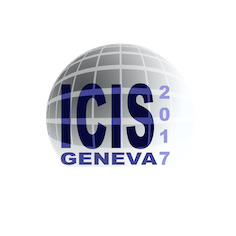Speaker
Description
One of the main concerns when working with negative ion sources is beam collimation during propagation. All the particles that make up the beam have the same electric charge, therefore they tend to repel each other: this causes the beam to widen after being accelerated. In environments where the beam needs to travel long distances before reaching its target, the compensation of its space charge is necessary; the most straightforward way of achieving this is the creation of a plasma around the beam, created by ionization of the background gas by the beam itself. This effect, called space charge compensation, plays therefore a key role in the beam propagation and a deep understanding of phenomenon is fundamental when operating negative ion sources. In order to perform measurements of the particles forming such beam, a retarding field energy analyzer (RFEA) is suitable. RFEAs are indirect non perturbing instruments, which analyse the particles emitted radially from the beam plasma, and allows to estimate the plasma parameters from the energy distribution function of ions and electrons. This diagnostic system consists of a conductive case located perpendicularly to the beam. It mainly acts as a repeller for electrons; thus the remaining positive ions expelled from the beam due to the slightly positive potential can enter the analyzer and reach the collector at the opposite end. Inside the analyzer, four grids are biased with variable voltages to select the particles according to their energy and to measure the relative collected currents. To this purpose a polarization and acquisition system was designed and developed suitable to the RFEA. In this paper the circuitry of such system is presented, showing its main features and discussing the performances. The system is designed so as to bias the grids and the metal case itself, and to investigate the corresponding collected currents. The system has been developed starting from a Raspberry_PI single-board computer and the printed circuit board called R_Adapt. The latter one is a multi-channel card for ADC-DAC general purpose, with the possibility of expansion, having the integrated ADC and DAC channels electrically isolated and managed via Raspberry_PI. The system comprises: 4 amplifiers (made with the components Apex PA85) with output voltage of ±120 V at 100 kHz; 4 acquisition channels for the voltage of the grids with 12 bits resolution at 100 kHz. The settings of the amplifiers and the data acquisition are managed by three Raspberry_PI cards and the custom card R_Adapt developed at Consorzio RFX. This one guarantees the electrical insulation of the measurements with respect to the electrical reference of the Raspberry_PI cards to carry out measurements at different potential without affecting the output signals. The acquisition system setup is based on the C.A.R.S. (Control and Acquisition on RaspberryPi Systems) solution, using WebSocket and a webserver present on the Raspberry_PI. With this configuration the client PC does not need any particular configuration to use the device. Data is stored locally and can be accessed via web browser, ssh or ftp.
